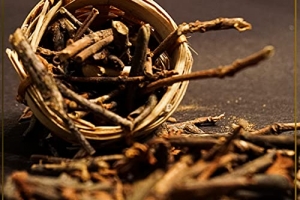Losar, the most significant festival in Tibet, heralds the arrival of the Tibetan New Year, steeped in rich cultural and spiritual heritage. Typically celebrated in February, its exact timing fluctuates from year to year, dictated by the lunar calendar and closely attuned to the celestial dance of the moon—a key element in traditional Tibetan timekeeping. This vibrant celebration unfolds over three days, each filled with a tapestry of customs and traditions that beautifully encapsulate the essence of Tibetan identity.

Losar Day One: Family Reunions
The festivities commence on the first day, a cherished occasion for family reunions. Homes come alive with traditional Tibetan cuisine’s warm, inviting aromas as relatives gather to engage in heartfelt rituals designed to cultivate a hopeful spirit for the year ahead. Joy permeates the atmosphere as families share stories and laughter and prepare a special dish called “guthuk.” This unique culinary creation, crafted with a medley of ingredients enveloped in dough, symbolises health and good fortune. These intimate interactions underscore the importance of familial connections and reinforce the core values of love, respect, and unity that are fundamental in Tibetan culture.
Losar Days Two and Three: Community Celebration
As Losar progresses into the second and third days, the celebrations expand to embrace the broader community. Visiting friends, extended family, and neighbours become a joyful custom, exchanging gifts and delectable homemade treats, such as “Casey,” a sweet, fried pastry. These gestures of kindness and generosity play a vital role in strengthening communal ties, nurturing a sense of belonging, and sustaining the long-standing relationships essential in a society that highly values interdependence and mutual support.
Spiritual Significance of Losar
Moreover, Losar presents an opportunity for Tibetans to pay homage to local monasteries, which hold immense spiritual significance. Pilgrims arrive laden with offerings of food, fragrant incense, and monetary gifts for the monks, acts that represent deep devotion, gratitude, and fervent hopes for blessings and prosperity in the new year. This seamless integration of spiritual practice with cultural celebration enriches the essence of Losar, providing a moment for reflection and reconnection with the divine.

Preparations for Losar Celebrations
Preparations for Losar begin long before the festival, as families engage in symbolic rituals of purification and renewal. In the days leading up to the holiday, homes undergo meticulous cleaning and decluttering, often enhanced by a fresh coat of whitewash. This thorough cleansing symbolises a release from past negativity and an open-door policy for new beginnings, embodying the spirit of renewal that the holiday represents. When the day finally arrives, participants don their finest traditional attire, adorned in a vibrant kaleidoscope of colours and intricate patterns that pay homage to their rich cultural inheritance.
Culinary Traditions of Losar
The culinary celebration of Losar is a remarkable highlight, showcasing a rich tapestry of traditional dishes that reflect Tibet’s cultural heritage. Each recipe, treasured and meticulously preserved through generations, serves as a culinary artefact, telling the story of the land and its people. These dishes are not just meal options but are infused with symbolism and meaning, designed to unite families in celebration.
Among the array of traditional fare, one can find specialities such as “momo” (steamed dumplings), which are often filled with seasoned meats and vegetables, and “thukpa”, a hearty noodle soup that warms the soul during the winter festivities. Using unique ingredients like barley, butter tea, and local herbs enhances the distinct flavours emblematic of Tibetan cuisine. Each meal during Losar is thoughtfully prepared, emphasising the importance of community and the sharing of culinary heritage. This makes it a truly memorable experience for all who participate.
Monastic Activities and Festive Spirit of Losar
Throughout the celebration, the monasteries become bustling centres of activity, beautifully adorned with decorations that capture the joyful essence of the season. Monks diligently engage in religious rites to dispel malevolent spirits, foster purification, and ensure prosperity for the coming year. The festivities are infused with joyful feasting, lively music, and traditional dances like the “Cham” dance, performed with stunningly colourful masks and elaborate costumes, resulting in a vibrant atmosphere filled with vitality, joy, and a palpable sense of community spirit.
Historical Roots of Losar
The origins of Losar weave a fascinating narrative through Tibetan history, tracing back to ancient rituals that predate the arrival of Buddhism in the region. Initially celebrated as a winter festival by adherents of the ancient Bon religion, it involved incense offerings and various rites to appease local spirits and deities. Over centuries, as Buddhism took root in Tibet, Losar underwent a significant transformation by incorporating Buddhist influences, evolving into the richly layered and multifaceted festival honoured throughout the Tibetan plateau today. This harmonious blend of diverse traditions symbolises Tibet’s spiritual evolution. It is a powerful testament to the resilience and continuity of its unique cultural identity amid the sands of time and change.











